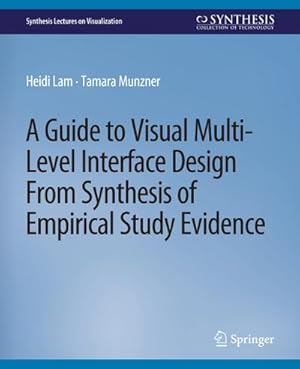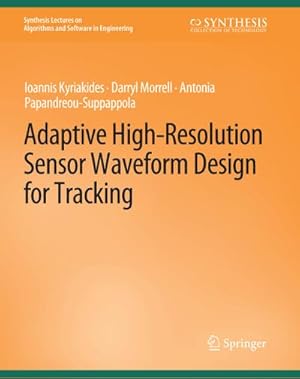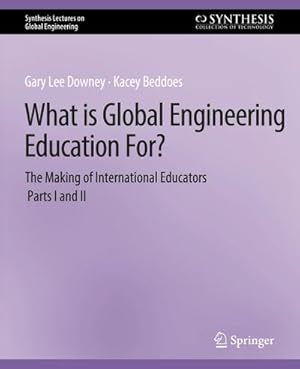springer international publishing nov 2010 (8 risultati)
Tipo di articolo
- Tutti gli articoli
- Libri (8)
- Riviste e Giornali
- Fumetti
- Spartiti
- Arte, Stampe e Poster
- Fotografie
- Mappe
-
Manoscritti e
Collezionismo cartaceo
Condizioni
- Tutte
- Nuovi
- Antichi o usati
Legatura
- Tutte
- Rilegato
- Brossura
Ulteriori caratteristiche
- Prima edizione
- Copia autografata
- Sovraccoperta
- Con foto
- No print on demand
Paese del venditore
Valutazione venditore
-
Advanced Metasearch Engine Technology
Editore: Springer International Publishing Nov 2010, 2010
ISBN 10: 3031007158ISBN 13: 9783031007156
Da: BuchWeltWeit Ludwig Meier e.K., Bergisch Gladbach, Germania
Libro Print on Demand
Taschenbuch. Condizione: Neu. This item is printed on demand - it takes 3-4 days longer - Neuware -Among the search tools currently on the Web, search engines are the most well known thanks to the popularity of major search engines such as Google and Yahoo! While extremely successful, these major search engines do have serious limitations. This book introduces large-scale metasearch engine technology, which has the potential to overcome the limitations of the major search engines. Essentially, a metasearch engine is a search system that supports unified access to multiple existing search engines by passing the queries it receives to its component search engines and aggregating the returned results into a single ranked list. A large-scale metasearch engine has thousands or more component search engines. While metasearch engines were initially motivated by their ability to combine the search coverage of multiple search engines, there are also other benefits such as the potential to obtain better and fresher results and to reach the Deep Web. The following major components of large-scale metasearch engines will be discussed in detail in this book: search engine selection, search engine incorporation, and result merging. Highly scalable and automated solutions for these components are emphasized. The authors make a strong case for the viability of the large-scale metasearch engine technology as a competitive technology for Web search. Table of Contents: Introduction / Metasearch Engine Architecture / Search Engine Selection / Search Engine Incorporation / Result Merging / Summary and Future Research 132 pp. Englisch.
-
Information Concepts
Editore: Springer International Publishing Nov 2010, 2010
ISBN 10: 3031011457ISBN 13: 9783031011450
Da: BuchWeltWeit Ludwig Meier e.K., Bergisch Gladbach, Germania
Libro Print on Demand
Taschenbuch. Condizione: Neu. This item is printed on demand - it takes 3-4 days longer - Neuware -Information is essential to all human activity, and information in electronic form both amplifies and augments human information interactions. This lecture surveys some of the different classical meanings of information, focuses on the ways that electronic technologies are affecting how we think about these senses of information, and introduces an emerging sense of information that has implications for how we work, play, and interact with others. The evolutions of computers and electronic networks and people's uses and adaptations of these tools manifesting a dynamic space called cyberspace. Our traces of activity in cyberspace give rise to a new sense of information as instantaneous identity states that I term proflection of self. Proflections of self influence how others act toward us. Four classical senses of information are described as context for this new form of information. The four senses selected for inclusion here are the following: thought and memory, communication process, artifact, and energy. Human mental activity and state (thought and memory) have neurological, cognitive, and affective facets.The act of informing (communication process) is considered from the perspective of human intentionality and technical developments that have dramatically amplified human communication capabilities. Information artifacts comprise a common sense of information that gives rise to a variety of information industries. Energy is the most general sense of information and is considered from the point of view of physical, mental, and social state change. This sense includes information theory as a measurable reduction in uncertainty. This lecture emphasizes how electronic representations have blurred media boundaries and added computational behaviors that yield new forms of information interaction, which, in turn, are stored, aggregated, and mined to create profiles that represent our cyber identities. Table of Contents: The Many Meanings of Information / Information as Thought and Memory / Information as Communication Process / Information as Artifact / Information as Energy / Information as Identity in Cyberspace: The Fifth Voice / Conclusion and Directions 108 pp. Englisch.
-
A Guide to Visual Multi-Level Interface Design From Synthesis of Empirical Study Evidence
Editore: Springer International Publishing Nov 2010, 2010
ISBN 10: 3031014707ISBN 13: 9783031014703
Da: BuchWeltWeit Ludwig Meier e.K., Bergisch Gladbach, Germania
Libro Print on Demand
Taschenbuch. Condizione: Neu. This item is printed on demand - it takes 3-4 days longer - Neuware -Displaying multiple levels of data visually has been proposed to address the challenge of limited screen space. Although many previous empirical studies have addressed different aspects of this question, the information visualization research community does not currently have a clearly articulated consensus on how, when, or even if displaying data at multiple levels is effective.To shed more light on this complex topic, we conducted a systematic review of 22 existing multi-level interface studies to extract high-level design guidelines. To facilitate discussion, we cast our analysis findings into a four-point decision tree: (1) When are multi-level displays useful (2) What should the higher visual levels display (3) Should the different visual levels be displayed simultaneously, or one at a time (4) Should the visual levels be embedded in a single display, or separated into multiple displays Our analysis resulted in three design guidelines: (1) the number of levels in display and data should match; (2) high visual levels should only display task-relevant information; (3) simultaneous display, rather than temporal switching, is suitable for tasks with multi-level answers.Table of Contents: Introduction / Terminology / Methodology / Summary of Studies / Decision 1: Single or Multi-level Interface / Decision 2: How to Create the High-Level Displays / Decision 3: Simultaneous or Temporal Displays of the Multiple Visual Levels / Decision 4: How to Spatially Arrange the Visual Levels, Embedded or Separate / Limitations of Study / Design Recommendations / Discussion and Future Work 120 pp. Englisch.
-
Adaptive High-Resolution Sensor Waveform Design for Tracking
Editore: Springer International Publishing Nov 2010, 2010
ISBN 10: 303100387XISBN 13: 9783031003875
Da: BuchWeltWeit Ludwig Meier e.K., Bergisch Gladbach, Germania
Libro Print on Demand
Taschenbuch. Condizione: Neu. This item is printed on demand - it takes 3-4 days longer - Neuware -Recent innovations in modern radar for designing transmitted waveforms, coupled with new algorithms for adaptively selecting the waveform parameters at each time step, have resulted in improvements in tracking performance. Of particular interest are waveforms that can be mathematically designed to have reduced ambiguity function sidelobes, as their use can lead to an increase in the target state estimation accuracy. Moreover, adaptively positioning the sidelobes can reveal weak target returns by reducing interference from stronger targets. The manuscript provides an overview of recent advances in the design of multicarrier phase-coded waveforms based on Bjorck constant-amplitude zero-autocorrelation (CAZAC) sequences for use in an adaptive waveform selection scheme for mutliple target tracking. The adaptive waveform design is formulated using sequential Monte Carlo techniques that need to be matched to the high resolution measurements. The work will be of interest to both practitioners and researchers in radar as well as to researchers in other applications where high resolution measurements can have significant benefits. Table of Contents: Introduction / Radar Waveform Design / Target Tracking with a Particle Filter / Single Target tracking with LFM and CAZAC Sequences / Multiple Target Tracking / Conclusions 112 pp. Englisch.
-
The Theory of Timed I/O Automata, Second Edition
Editore: Springer International Publishing Nov 2010, 2010
ISBN 10: 3031008758ISBN 13: 9783031008757
Da: BuchWeltWeit Ludwig Meier e.K., Bergisch Gladbach, Germania
Libro Print on Demand
Taschenbuch. Condizione: Neu. This item is printed on demand - it takes 3-4 days longer - Neuware -This monograph presents the Timed Input/Output Automaton (TIOA) modeling framework, a basic mathematical framework to support description and analysis of timed (computing) systems. Timed systems are systems in which desirable correctness or performance properties of the system depend on the timing of events, not just on the order of their occurrence. Timed systems are employed in a wide range of domains including communications, embedded systems, real-time operating systems, and automated control. Many applications involving timed systems have strong safety, reliability, and predictability requirements, which make it important to have methods for systematic design of systems and rigorous analysis of timing-dependent behavior. The TIOA framework also supports description and analysis of timed distributed algorithms -- distributed algorithms whose correctness and performance depend on the relative speeds of processors, accuracy of local clocks, or communication delay bounds. Such algorithms arise, for example, in traditional and wireless communications, networks of mobile devices, and shared-memory multiprocessors. The need to prove rigorous theoretical results about timed distributed algorithms makes it important to have a suitable mathematical foundation. An important feature of the TIOA framework is its support for decomposing timed system descriptions. In particular, the framework includes a notion of external behavior for a timed I/O automaton, which captures its discrete interactions with its environment. The framework also defines what it means for one TIOA to implement another, based on an inclusion relationship between their external behavior sets, and defines notions of simulations, which provide sufficient conditions for demonstrating implementation relationships. The framework includes a composition operation for TIOAs, which respects external behavior, and a notion of receptiveness, which implies that a TIOA does not block the passage of time. The TIOA framework also defines the notion of a property and what it means for a property to be a safety or a liveness property. It includes results that capture common proof methods for showing that automata satisfy properties. Table of Contents: Introduction / Mathematical Preliminaries / Describing Timed System Behavior / Timed Automata / Operations on Timed Automata / Properties for Timed Automata / Timed I/O Automata / Operations on Timed I/O Automata / Conclusions and Future Work 140 pp. Englisch.
-
An Introduction to Models of Online Peer-to-Peer Social Networking
Editore: Springer International Publishing Nov 2010, 2010
ISBN 10: 3031799976ISBN 13: 9783031799976
Da: BuchWeltWeit Ludwig Meier e.K., Bergisch Gladbach, Germania
Libro Print on Demand
Taschenbuch. Condizione: Neu. This item is printed on demand - it takes 3-4 days longer - Neuware -This book concerns peer-to-peer applications and mechanisms operating on the Internet, particularly those that are not fully automated and involve significant human interaction. So, the realm of interest is the intersection of distributed systems and online social networking. Generally, simple models are described to clarify the ideas. Beginning with short overviews of caching, graph theory and game theory, we cover the basic ideas of structured and unstructured search. We then describe a simple framework for reputations and for iterated referrals and consensus. This framework is applied to a problem of sybil identity management. The fundamental result for iterated Byzantine consensus for a relatively important issue is also given. Finally, a straight-forward epidemic model is used to describe the propagation of malware on-line and for BitTorrent-style file-sharing.This short book can be used as a preliminary orientation to this subject matter. References are given for the interested student to papers with good survey and tutorial content and to those with more advanced treatments of specific topics. For an instructor, this book is suitable for a one-semester seminar course. Alternatively, it could be the framework for a semester's worth of lectures where the instructor would supplement each chapter with additional lectures on related or more advanced subject matter. A basic background is required in the areas of computer networking, probability theory, stochastic processes, and queueing.Table of Contents: Networking overview / Graphs / Games / Search in structured networks / Search in unstructured networks / Transactions, reputations, and referrals / False Referrals / Peer-to-peer file sharing / Consensus in dynamical belief systems / Byzantine consensus / Epidemics 128 pp. Englisch.
-
What is Global Engineering Education For? The Making of International Educators, Part III
Editore: Springer International Publishing Nov 2010, 2010
ISBN 10: 3031009975ISBN 13: 9783031009976
Da: BuchWeltWeit Ludwig Meier e.K., Bergisch Gladbach, Germania
Libro Print on Demand
Taschenbuch. Condizione: Neu. This item is printed on demand - it takes 3-4 days longer - Neuware -Global engineering offers the seductive image of engineers figuring out how to optimize work through collaboration and mobility. Its biggest challenge to engineers, however, is more fundamental and difficult: to better understand what they know and value qua engineers and why. This volume reports an experimental effort to help sixteen engineering educators produce ''personal geographies'' describing what led them to make risky career commitments to international and global engineering education. The contents of their diverse trajectories stand out in extending far beyond the narrower image of producing globally-competent engineers. Their personal geographies repeatedly highlight experiences of incongruence beyond home countries that provoked them to see themselves and understand their knowledge differently. The experiences were sufficiently profound to motivate them to design educational experiences that could provoke engineering students in similar ways. For nine engineers, gaining new international knowledge challenged assumptions that engineering work and life are limited to purely technical practices, compelling explicit attention to broader value commitments. For five non-engineers and two hybrids, gaining new international knowledge fueled ambitions to help engineering students better recognize and critically examine the broader value commitments in their work. A background chapter examines the historical emergence of international engineering education in the United States, and an epilogue explores what it might take to integrate practices of critical self-analysis more systematically in the education and training of engineers. Two appendices and two online supplements describe the unique research process that generated these personal geographies, especially the workshop at the U.S. National Academy of Engineering in which authors were prohibited from participating in discussions of their manuscripts. Table of Contents: Communicating Across Cultures: Humanities in the International Education of Engineers (Bernd Widdig) / Linking Language Proficiency and the Professions (Michael Nugent) / Language, Life, and Pathways to Global Competency for Engineers (and Everyone Else) (Phil McKnight) / Bridging Two worlds (John M. Grandin) / Opened Eyes: From Moving Up to Helping Students See (Gayle G. Elliott) / What is Engineering for A Search for Engineering beyond Militarism and Free-markets (Juan Lucena) / Location, Knowledge, and Desire: From Two Conservatisms to Engineering Cultures and Countries (Gary Lee Downey) / Epilogue - Beyond Global Competence: Implications for Engineering Pedagogy (Gary Lee Downey) 248 pp. Englisch.
-
What is Global Engineering Education For? The Making of International Educators, Part I & II
Editore: Springer International Publishing Nov 2010, 2010
ISBN 10: 3031009967ISBN 13: 9783031009969
Da: BuchWeltWeit Ludwig Meier e.K., Bergisch Gladbach, Germania
Libro Print on Demand
Taschenbuch. Condizione: Neu. This item is printed on demand - it takes 3-4 days longer - Neuware -Global engineering offers the seductive image of engineers figuring out how to optimize work through collaboration and mobility. Its biggest challenge to engineers, however, is more fundamental and difficult: to better understand what they know and value qua engineers and why. This volume reports an experimental effort to help sixteen engineering educators produce ''personal geographies'' describing what led them to make risky career commitments to international and global engineering education. The contents of their diverse trajectories stand out in extending far beyond the narrower image of producing globally-competent engineers. Their personal geographies repeatedly highlight experiences of incongruence beyond home countries that provoked them to see themselves and understand their knowledge differently. The experiences were sufficiently profound to motivate them to design educational experiences that could challenge engineering students in similar ways. For nine engineers, gaining new international knowledge challenged assumptions that engineering work and life are limited to purely technical practices, compelling explicit attention to broader value commitments. For five non-engineers and two hybrids, gaining new international knowledge fueled ambitions to help engineering students better recognize and critically examine the broader value commitments in their work. A background chapter examines the historical emergence of international engineering education in the United States, and an epilogue explores what it might take to integrate practices of critical self-analysis more systematically in the education and training of engineers. Two appendices and two online supplements describe the unique research process that generated these personal geographies, especially the workshop at the U.S. National Academy of Engineering in which authors were prohibited from participating in discussions of their manuscripts. Table of Contents: The Border Crossers: Personal Geographies of International and Global Engineering Educators (Gary Lee Downey) / From Diplomacy and Development to Competitiveness and Globalization: Historical Perspectives on the Internationalization of Engineering Education (Brent Jesiek and Kacey Beddoes) / Crossing Borders: My Journey at WPI (Rick Vaz) / Education of Global Engineers and Global Citizens (E. Dan Hirleman) / In Search of Something More: My Path Towards International Service-Learning in Engineering Education (Margaret F. Pinnell) / International Engineering Education: The Transition from Engineering Faculty Member to True Believer (D. Joseph Mook) / Finding and Educating Self and Others Across Multiple Domains: Crossing Cultures, Disciplines, Research Modalities, and Scales (Anu Ramaswami) / If You Don't Go, You Don't Know (Linda D. Phillips) / A Lifetime of Touches of an Elusive ''Virtual Elephant'': Global Engineering Education (Lester A. Gerhardt) / Developing Global Awareness in a College of Engineering (Alan Parkinson) / The Right Thing to Do: Graduate Education and Research in a Global and Human Context (James R. Mihelcic) / Author Biographies 284 pp. Englisch.









